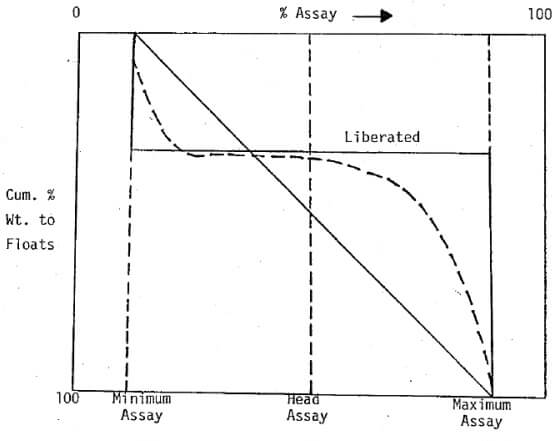The incremental assays obtained for each S.G. are plotted against the average cumulative % weight of sinks and floats.
This curve shows the assay of the richest particles in a float or sink. If it is used in conjunction with the cumulative assay of floats or sinks curve, it indicates the spread of assay values obtained in a given product.
A material that contains equal amounts of all possible grades of particle will be shown by a straight line joining the maximum assay at zero sinks to the minimum assay at zero floats.
If the feed material is completely homogeneous, that is with no mineral liberation at all, the minimum and maximum assays will tend to the head assay and the characteristic Assay curve will be a vertical line at the head assay.
In practice the curve will have a reclining S shape.
- Clear inflexion points with a wide flat mid-section indicates the absence of middlings with the possibility of easy clean separation.
- Poor or indistinguishable inflexion points with a large slope in the mid-section indicates the presence of middling and a difficult separation.
In general, the steeper the curve, the more difficult is the separation at that point.

